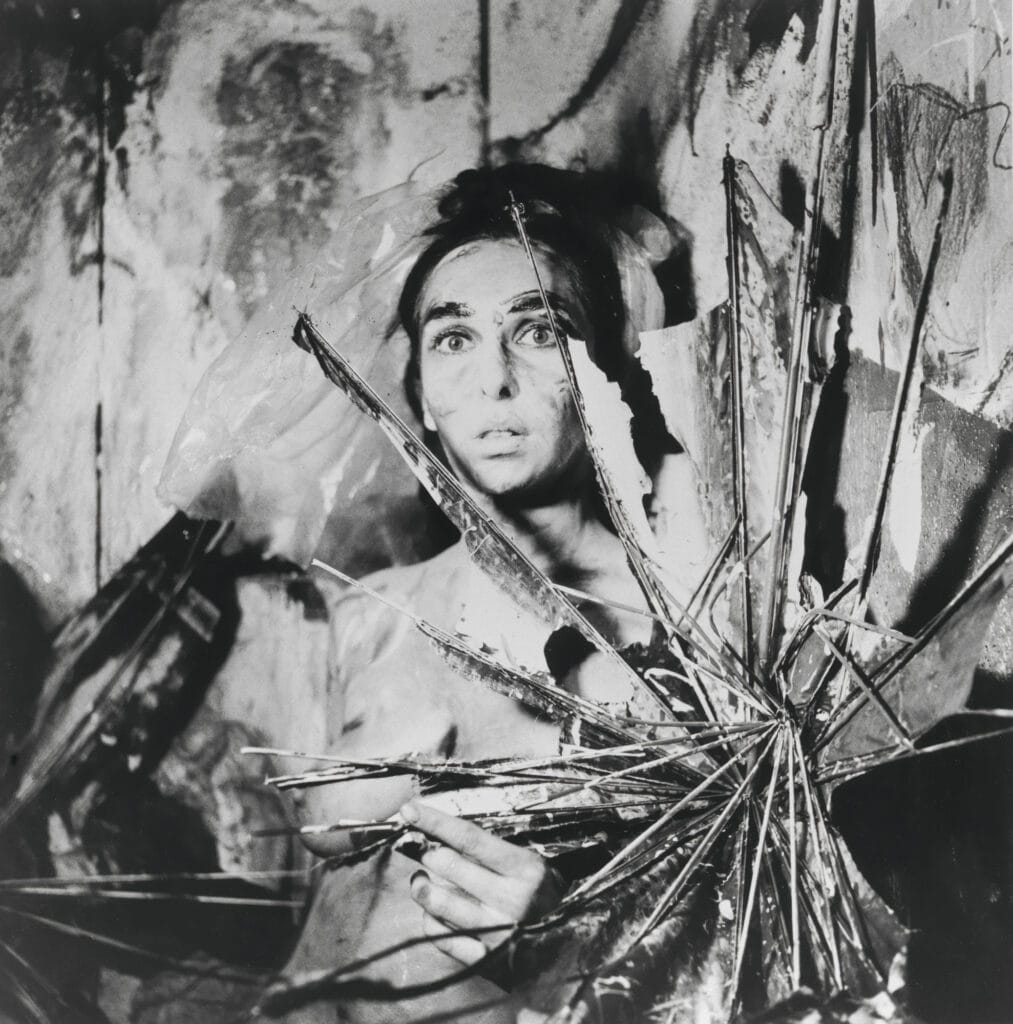In the annals of performance art, where bodies move like whispers across the tapestry of existence, Carolee Schneemann emerges as a luminary—an alchemist of sensation, a conjurer of visceral truths. Her work transcends the mere act of creation; it is a dialogue between the corporeal and the ethereal, a dance of flesh and spirit that challenges the boundaries of gender, identity, and the very essence of art itself.
Born in the vibrant cacophony of 1939 in Fox Chase, Pennsylvania, Schneemann’s early life was steeped in a duality of experience, oscillating between the conventional confines of her upbringing and the burgeoning rebellion of the 1960s. The daughter of a painter and a concert singer, she was nourished by the creative pulse of her surroundings. It was within this artistic cradle that she began to question the roles assigned to women and the limitations imposed by a patriarchal society. The seeds of her revolutionary spirit were sown early, nurtured by a desire to explore the depths of her own identity and the societal constructs that sought to define it.

Schneemann’s magnum opus, “Meat Joy” (1964), is a celebration of the primal. It is a sensory explosion, a visceral buffet of flesh—both animal and human—that invites the audience to embrace the raw, unfiltered essence of existence. Bodies entwined, draped in fish, and enveloped by a cascade of color, the performance ruptures the boundaries of societal norms, inviting viewers to confront their own discomforts and desires. In this swirling maelstrom of touch and taste, Schneemann beckons us to relinquish our inhibitions, to feast upon the disarray of our humanity. The performance is not merely a spectacle; it is a ritualistic communion with the very essence of life.
Her daring exploration of sexuality and femininity remains a hallmark of her oeuvre. In “Interior Scroll” (1975), she stands naked, embodying vulnerability while reading from a scroll that unfurls from her vagina—a radical act that simultaneously asserts and subverts the male gaze. Here, the body becomes a site of knowledge, a vessel through which the silenced voices of women are articulated. The scroll, like a serpentine whisper, reveals a narrative often hidden in the shadows, illuminating the complexities of female identity with a fierce, unapologetic light. The act itself challenges the very foundation of how women’s bodies are perceived, transforming them from objects of desire into powerful storytellers.
Schneemann’s artistic journey did not confine itself to the stage; she also made waves in the visual arts. Her canvases, laden with layers of multimedia—be it paint, fur, or even the remnants of her own flesh—speak to the interconnectedness of experience. In works such as “Fuses” (1964), she intertwines film, performance, and painting, capturing the intimacy of love and desire through a lens that is both personal and universal. The film becomes a tapestry of emotional landscapes, where the viewer is invited to witness the raw, unfiltered moments of connection, entanglement, and liberation. In this fusion of mediums, Schneemann challenges the traditional definitions of art, urging us to see the beauty in chaos and vulnerability.

Throughout her career, Schneemann’s audacity was met with both admiration and derision. She stood at the vanguard of feminist art, forging pathways for those who dared to tread where silence once reigned. In a world that often relegated women to the sidelines, her bold explorations demanded attention, forcing society to confront the intricacies of gender, sexuality, and the very act of creation itself. Each performance, each painting, became a declaration of independence, a refusal to be confined by the expectations of others.
In the twilight of her life, Schneemann remained a beacon of advocacy, championing the voices of marginalized artists and continuing to push the boundaries of what art can encompass. Her legacy, a vibrant tapestry woven from threads of defiance and authenticity, continues to resonate within the hearts of a new generation of creators. She became an elder stateswoman of performance art, inspiring countless artists to embrace their own narratives and the complexities of their identities.


Carolee Schneemann’s art is an invocation—a call to witness the body not as an object but as a locus of identity, experience, and expression. In her relentless pursuit of truth, she dismantled the preconceptions of art and gender, challenging us to embrace the complexities of our own existence. As we reflect upon her profound contributions, we are reminded that the body, in all its forms, is a canvas; the soul, a stage upon which the dance of life unfolds.
In the echo of her footsteps, we find not just a performance, but an invitation to explore the uncharted territories of our own narratives. Schneemann’s artistry calls forth a deeper understanding of the human condition, urging us to celebrate our bodies, our stories, and the intricate web of connections that bind us all. In remembering her, we embrace the revolutionary spirit she embodied—a spirit that continues to inspire us to question, to feel, and to create.






